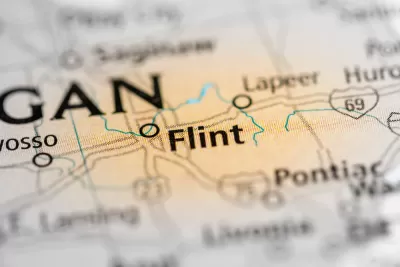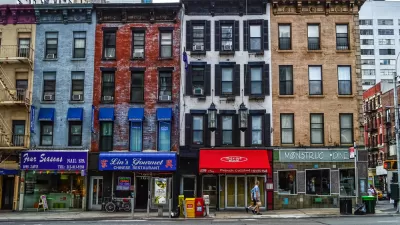The community's hard work has helped Flint planners take an inventory of its building stock, as well as secure needed funding from the federal government.

Scott Atkinson reports on a unique participatory planning process that helped the city of Flint with some of the hard work necessary for a master planning process launched in 2012, and has since helped the city secure funding from the federal Hardest Hit fund.
The key to the story has been community participation in a neighborhood inventory process, that helped not only identify the city's existing development strengths and weaknesses, but also helped take the message about the master plan and build trust for planning among the community.
"That first year, 2012, community-based groups inventoried the balance of residential properties" not yet inventoried by city planners, according to Atkinson.
In 2013, residents hit the streets again, this time taking inventory of the city’s commercial properties. In 2014, they updated their residential data and documented the state of the city’s streetlights. In 2015, they took inventory on sidewalks. In 2016, they turned to residential again (an every other year project), and in 2017, residential and commercial properties.
Those inventories have also been integral to helping the Genesee County Land Bank and the city of Flint secure $20.1 million from "the federal Hardest Hit Fund, a program that helps communities struggling with high foreclosure rates." According to Atkinson, "[a]s of July, Flint has received a total of about $67.5 million in Hardest Hit money. About half of that has been spent so far, resulting in the demolition of 2,248 structures."
This article is the fourth in a five-story series on resident-led revitalization efforts in Flint, Michigan.
FULL STORY: Flint mapping makes city planning a team effort

Alabama: Trump Terminates Settlements for Black Communities Harmed By Raw Sewage
Trump deemed the landmark civil rights agreement “illegal DEI and environmental justice policy.”

Study: Maui’s Plan to Convert Vacation Rentals to Long-Term Housing Could Cause Nearly $1 Billion Economic Loss
The plan would reduce visitor accommodation by 25% resulting in 1,900 jobs lost.

Planetizen Federal Action Tracker
A weekly monitor of how Trump’s orders and actions are impacting planners and planning in America.

Waymo Gets Permission to Map SF’s Market Street
If allowed to operate on the traffic-restricted street, Waymo’s autonomous taxis would have a leg up over ride-hailing competitors — and counter the city’s efforts to grow bike and pedestrian on the thoroughfare.

Parklet Symposium Highlights the Success of Shared Spaces
Parklets got a boost during the Covid-19 pandemic, when the concept was translated to outdoor dining programs that offered restaurants a lifeline during the shutdown.

Federal Homelessness Agency Places Entire Staff on Leave
The U.S. Interagency Council on Homelessness is the only federal agency dedicated to preventing and ending homelessness.
Urban Design for Planners 1: Software Tools
This six-course series explores essential urban design concepts using open source software and equips planners with the tools they need to participate fully in the urban design process.
Planning for Universal Design
Learn the tools for implementing Universal Design in planning regulations.
Caltrans
Smith Gee Studio
Institute for Housing and Urban Development Studies (IHS)
City of Grandview
Harvard GSD Executive Education
Toledo-Lucas County Plan Commissions
Salt Lake City
NYU Wagner Graduate School of Public Service





























